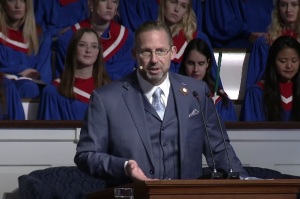NASA Discovers Two New Planets
NASA has discovered two earth-sized planets, scientists announced on Tuesday.
The planets, which are much hotter than our planet Earth, are located 950 light-years away from earth and the planets are closely orbiting a star. One of the two newly discovered planets is strikingly similar to earth in size, while the other planet is a bit smaller, and both are extremely hot.
Scientists believe that due to the proximity of the planets to the star, temperatures of the planets are too hot to support life. However, scientists have expressed excitement as the new discovery is inching them closer to discovering a twin planet Earth- one that could potentially be inhabitable.
“It is the first time humanity has been able to discover an object similar to the Earth around a star, so maybe we will be able to find others,” Dr. Francois Fressin told Daily Mail.
Some scientists are arguing that the first true “alien earth” may even be found as soon as 2012.
“I’m guessing that this next planet catalog is going to see, finally, some numbers of points that are really, truly Earth-sized and in the habitable zone,” Natalie Batalha of Kepler Science told MSNBC.com.
This past year has been an exciting one for scientists studying solar systems, as nearly 200 new alien planets have been discovered, and thousands more are waiting to be confirmed as potential planets by follow up observations.
With all the new discoveries, researchers are holding out hope that 2012 might witness the discovery of a twin earth.
“We’re really starting to get down to smaller planets with longer (orbital) periods,” Batalha added.
Earlier this month scientists made another notable discovery, locating the Kepler-22b, a planet double the size of Earth located in a habitable zone.
However, scientists do not believe that the Kepler-22b is habitable even though it lies in a habitable zone due to its massive size.





























